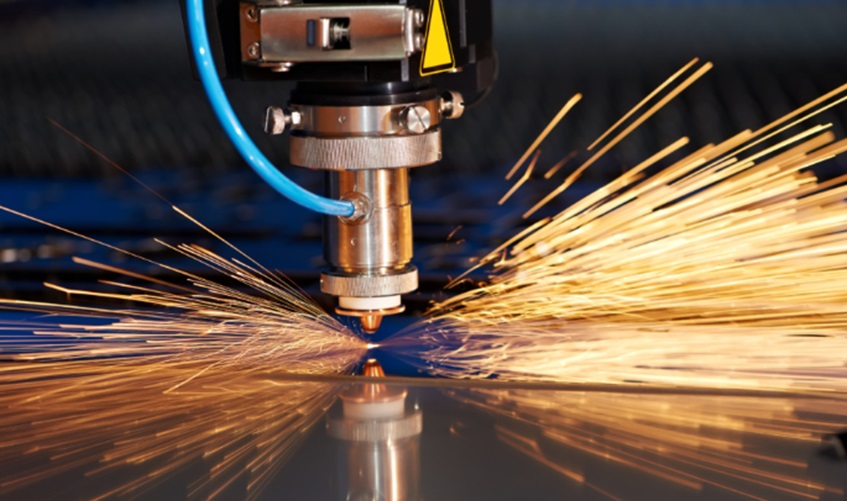
In today’s rapidly evolving industrial landscape, precision and efficiency are paramount. Manufacturers and engineers are constantly seeking innovative technologies to streamline processes, improve accuracy, and reduce waste. Laser profiling has emerged as a powerful tool in this quest for efficiency, offering unparalleled precision and versatility across a wide range of applications. In this article, we’ll explore the capabilities of profiling and how it can help businesses maximize efficiency in various industries.
Understanding Laser Profiling
Profiling is a cutting-edge technology that utilizes laser beams to precisely measure and map the contours of objects or surfaces. This process involves scanning a laser beam across a surface and measuring the reflected light to create a detailed three-dimensional (3D) representation of the object.
Profiling systems use advanced sensors and software algorithms to capture and analyze data with incredible accuracy and speed. This enables manufacturers to obtain highly precise measurements of complex shapes and geometries, making profiling ideal for applications where precision is critical.
Applications of Laser Profiling
Profiling finds applications across a wide range of industries, from automotive and aerospace to electronics and construction. One common application is in quality control and inspection processes, where profiling is used to ensure that manufactured parts meet strict dimensional tolerances and specifications.
In the automotive industry, for example, profiling is used to inspect body panels, engine components, and other critical parts for defects or deviations from design specifications. Similarly, in aerospace manufacturing, profiling is employed to measure the accuracy of aircraft components and ensure they meet stringent safety and performance standards.
Advantages of Laser Profiling
Profiling offers a multitude of benefits over conventional cutting methods, making it an attractive option for businesses seeking to improve efficiency, quality, and cost-effectiveness in their manufacturing processes.
Precision and Accuracy: Profiling enables precise and accurate cutting with tolerances as tight as a few micrometres. This level of precision ensures consistent quality and repeatability in manufactured parts, reducing rework and scrap and improving overall product performance.
Speed and Efficiency: Profiling is significantly faster than traditional cutting methods, allowing for high-speed processing of materials with minimal setup time and downtime. This results in faster turnaround times, increased throughput, and improved productivity for businesses.
Versatility and Flexibility: Profiling is capable of cutting a wide range of materials, including metals, plastics, ceramics, composites, and more. It can accommodate various material thicknesses, shapes, and sizes, making it a versatile solution for diverse manufacturing applications.
Minimal Material Wastage: Profiling produces clean, precise cuts with minimal kerf width, resulting in minimal material wastage compared to traditional cutting methods. This not only reduces material costs but also contributes to sustainability by minimizing environmental impact.
Complex Geometries and Designs: Profiling excels at cutting complex geometries, intricate patterns, and fine details that are challenging or impossible to achieve with conventional methods. This opens up new possibilities for innovative product designs and customization options.
Implementing Laser Profiling for Efficiency
To harness the power of profiling and maximize efficiency, businesses must invest in the right equipment and expertise. This involves selecting a profiling system that meets their specific needs and requirements, as well as training personnel to operate and maintain the equipment effectively.
Additionally, businesses should consider integrating profiling into their existing workflows and processes to optimize efficiency. This may involve automating measurement and inspection tasks using robotic systems or integrating profiling with other technologies such as computer-aided design (CAD) software and quality management systems.
Case Studies: Real-World Applications
Let’s explore a few real-world examples of how profiling is being used to maximize efficiency in different industries:
- Manufacturing: A manufacturer of precision machined components uses profiling to measure the dimensions of critical features and ensure they meet tight tolerances. By automating the measurement process with profiling, the manufacturer has reduced inspection time by 50% and improved overall product quality.
- Construction: A construction company utilizes profiling to survey construction sites and generate detailed 3D models of existing structures. By accurately capturing site data with profiling, the company can optimize construction planning and minimize errors during the building process, leading to significant cost savings and improved project efficiency.
- Medical Device Manufacturing: A medical device manufacturer employs profiling to inspect the surface finish of medical implants and ensure they meet regulatory requirements. By using profiling to measure surface roughness and texture, the manufacturer has improved the consistency and quality of its products, resulting in higher customer satisfaction and reduced scrap rates.
Conclusion
In conclusion, laser profiling is a powerful technology that offers numerous benefits for businesses looking to maximize efficiency in their operations. By leveraging the precision, speed, and versatility of profiling, manufacturers and engineers can optimize production processes, improve product quality, and reduce costs.
As technology continues to advance, the applications of profiling are likely to expand further, opening up new opportunities for innovation and improvement across a wide range of industries. By embracing profiling and integrating it into their workflows, businesses can stay ahead of the curve and achieve new levels of efficiency and success.



